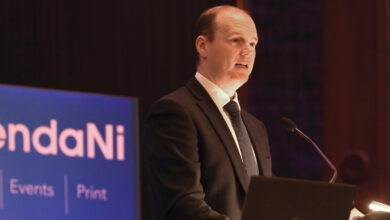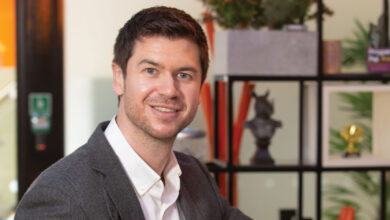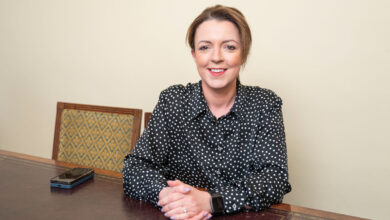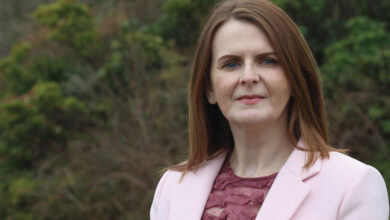Addiction’s cost
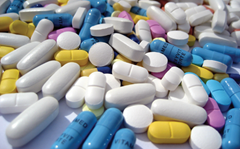 A bill of £700 million could have been racked up in treating the growing number of people in the province addicted to drugs and alcohol last year, according to an addiction charity. Emma Blee writes.
A bill of £700 million could have been racked up in treating the growing number of people in the province addicted to drugs and alcohol last year, according to an addiction charity. Emma Blee writes.
“Alcohol is still the big problem in Northern Ireland, drugs sometimes get more attention but alcohol is the main problem,” states Addiction NI’s director Claire Armstrong.
A DHSSPS census of drug and alcohol treatment services showed that on 1 March 2010, 5,846 people were in treatment for addiction, a 15 per cent increase from March 2005.
Some 57 per cent of these people were being treated for an addiction to alcohol while 22 per cent were treated for drug misuse and 21 per cent for both drug and alcohol misuse.
Addiction NI is just one charity working to tackle the problem. It offers treatment programmes, counselling, quick appointments without a GP referral, and support for family members, spouses and friends affected by alcohol or drug use.
Armstrong explains that there has been a significant rise in the number of people contacting the organisation: “We’ve seen a 40 per cent increase in terms of numbers of people we have treated in our agency over the last five years, which is a big increase.”
Many factors lead to an addiction, she says, but some of the most common are family problems, trauma, employment or housing problems.
In her experience, drug use is a growing concern with a “very big increase” in the use of cocaine due to a change in social trends, increased availability and lower prices.
However, with alcohol prices cheaper than they were 20 years ago, she says it is the biggest problem: “There does seem to be a link between the price of alcohol and the amount of alcohol consumed but of course it isn’t the only
factor.” A minimum price on alcohol, in her view, might help to reduce the problem.
In many cases, though, if someone has an addiction to alcohol they may also be using drugs. In Northern Ireland, the New Strategic Direction for Alcohol and Drugs strategy outlines the Executive’s approach to the problem over a five-year period (2006-2011).
It recognises the work of “dedicated individuals and organisations” in the statutory and voluntary sector and its main aim is to “reduce the level of alcohol and drug-related harm”. Drugs and alcohol are addressed by separate strategies in England and Wales. Armstrong says that a combined strategy is “useful and helpful” as it is designed to suit people with both problems.
In November, Michael McGimpsey announced that treating addiction in 2009-2010 cost £7.5 million. However, he stated that “without intervention and prevention the Health Service will struggle to cope with alcohol and drug misuse – and related issues such as domestic violence, child protection, mental health and suicide – in the years ahead.”
Armstrong points to a DHSSPS report, The Social Costs of Alcohol Misuse in Northern Ireland, which suggests that the actual cost on society as a whole, could be closer to £700 million. “That includes things like welfare costs, criminal justice costs, the cost to the Health Service of people who are not having treatment for an alcohol problem, i.e. the person that is drunk on a Saturday night,” she states.
More resources should be put into community-based intervention and prevention services, she says, to avoid so many people being admitted to hospital with addiction problems, as this is the most expensive form of treatment.
From her research, Armstrong says that for every £1 spent on alcohol misuse treatment programmes in community settings, £5 is actually saved in the long term.
“In terms of putting money in, we would argue that the voluntary and community sector plays an absolutely vital role. The prevention side of it is very important and doesn’t just have to be leaflets. There’s a whole range of different things that are involved in prevention work, including work with families, one-to-one work and couples work,” comments Armstrong.
With imminent budget cuts, Armstrong says there are major concerns about funding in the voluntary sector: “It’s such an important service that to go down that road would really be very counter- productive in terms of the overall aims to reduce alcohol and drug-related harm.
“If you cut the services there, you will end up with much more expensive problems down the line. You will end up with people in hospital beds that didn’t need to be there if those services had been available earlier.”
| Treatment type of individuals in treatment 2005-2010 | ||||
| 2005 | 2007 | 2010 | Change 2005-2010 (%) | |
| Drugs only | 1,030 | 1,118 | 1,294 | +26 |
| Alcohol only | 3,074 | 3,476 | 3,328 | +8 |
| Drugs and alcohol | 960 | 989 | 1,224 | +28 |
| Total | 5,064 | 5,583 | 5,846 | +15 |

